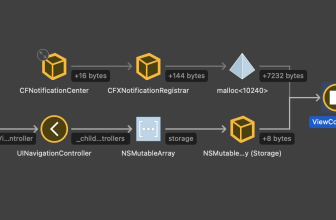Not only smartphones, fitness trackers, watches and headphones – even routers can Oppo. PCtipp is testing the 5G router. What is the interface, the performance and: Is it a replacement for the copper wire or fiber optic line? […]
Switzerland is not so bad when it comes to fibre–optic expansion – at least when we compare it with some of our neighbours. However, in more remote regions it will probably not always come to a final expansion – at least not “to the home”. And the residents can then count on a great strength: mobile network coverage. Practically in every valley or on every hill you have good LTE reception so far and, if it goes according to plan, also good 5G reception soon.
So if you get a data subscription and a 5G router, you can soon say goodbye to the coax connection, fiber back or forth. And a possible candidate for a solid 5G connection is the 5G router CPE T1a. Under this somewhat cryptic name hides a 5G router from the new high-flyer Oppo.
The square cylinder with the rounded edges is visually inconspicuous, not huge in size and can be easily placed free–standing – the manufacturer does without antennas and the like. On the front there are some LED lights that provide information about the connection status and signal strength. Here’s a tip: If you take out a data subscription and then receive a SIM from the provider, first plug it into a smartphone and deactivate the PIN. Otherwise, the SIM card in the router will not unlock the signal to the outside.
On the back there are the usual ports: once USB, twice LAN, once WAN, if you want to use the router only as a router and still want to hang on a modem – it is also suitable simply as a Wi-Fi & router. For this, the WPS and the Power button. On the bottom is the SIM slot (nano format), as well as all the data – SSID name, default passwords and so on. Inside there is a Qualcomm Snapdragon X55 5G modem chip that supports 4G and 5G.
Thanks to MU-MIMO, the router can always direct its signals (2.4 GHz or 5 GHz) bundled to where they are currently needed – virtually automatic prioritization. A speed test with the 5G-capable smartphone connected via WLAN resulted in around 350 Mbit/s (Sunrise, City of Zurich). This is solid to good, if you include the different bottle necks.
The setup works practically by itself. Insert the SIM card into the router, turn it on and wait a few minutes, then the network will be displayed in your wireless connections. Connect to it and surf the IP or the hostname indicated on the label at the bottom of the router – then you will be guided through the setup.
GUI

The browser-based user interface offers what is commonly expected of a router today: guest WLAN, MAC filters, timer, network monitoring, port forwarding, tunneling and – again and again underestimated – the possibility to turn off the LEDs. Almost even more important: the network mode. The router offers the possibility of a 4G fall-back network, for example, if the router is taken on a mountain holiday, where the 5G network is not yet so developed.

Conclusion
The router offers decent speed, a stable signal, supports all modern standards and is priced where 5G routers are today (high). He does not swing up or down. The workmanship is solid and comparatively pretty to look at. Perhaps a third LAN port could have been attached, but this is the only point of criticism.














